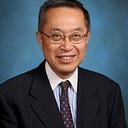Member-only story
A Rebuttal to Louis Komjathy
In his book The Daoist Tradition, Louis Komjathy dismisses the distinction between “philosophical Daoism” and “religious Daoism” as a “colonialist” and “Victorian” misinterpretation. The following is an exerpt from the first chapter of his book:
There is one representation of Daoism that is wholly inaccurate and untenable. This is the claim that there are ‘two Daoisms’, namely, so-called ‘philosophical Daoism’ and so-called ‘religious Daoism’. We may label this interpretation as the ‘Victorian’ or ‘Leggean view’ of Daoism, as the Protestant missionary James Legge (1815–97) was one of its most influencial advocates … This view of Daoism as a ‘bifurcated tradition’ is the dominant received view of Daoism. Rooted in colonialist legacies, such an interpretative framework is epidemic among non-specialist accounts of Daoism. The conventional presentation suggests that so-called ‘philosophical Daoism’, associated with the Daode jing and Zhuangzi, is ‘original’ or ‘pure Daoism’, while so-called ‘religious Daoism’ is a ‘degenerate’ and ‘supertitious’ adjunct to the former, undeserving of serious attention … Such a bifurcated interpretation of Daoism … involves a systematic misunderstanding and misinterpretation of classical Daoism.
It is important to note that the distinction between Daojia (道家) and Daojiao (道教) has a Chinese origin, not a Western one. Thus, the assertion that…
